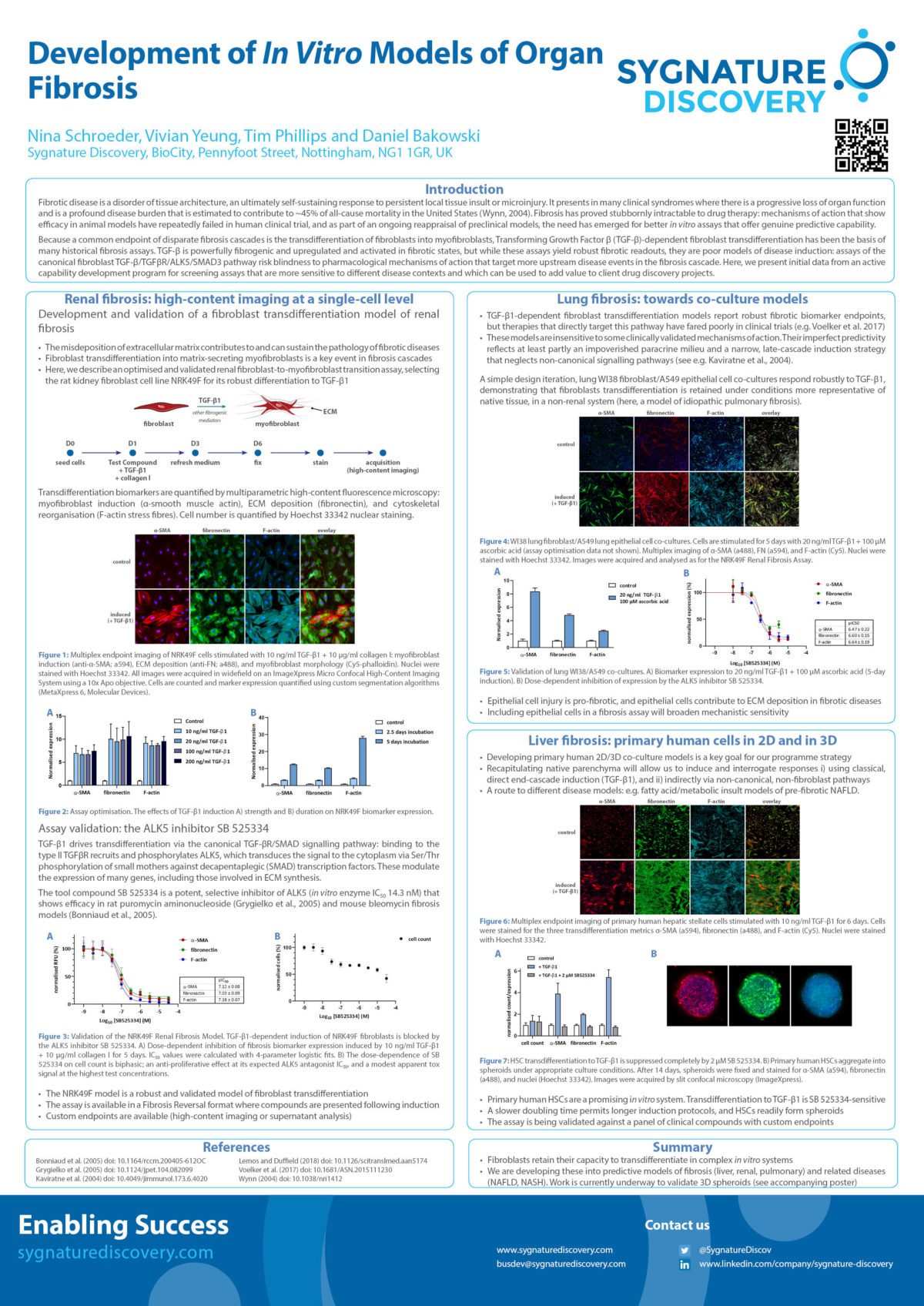Development of In Vitro Models of Organ Fibrosis
Fibrotic disease is a disorder of tissue architecture, an ultimately self-sustaining response to persistent local tissue insult or microinjury. It presents in many clinical syndromes where there is a progressive loss of organ function and is a profound disease burden that is estimated to contribute to ~45% of all-cause mortality in the United States (Wynn, 2004). Fibrosis has proved stubbornly intractable to drug therapy: mechanisms of action that show efficacy in animal models have repeatedly failed in human clinical trial, and as part of an ongoing reappraisal of preclinical models, the need has emerged for better in vitro assays that offer genuine predictive capability.
Because a common endpoint of disparate fibrosis cascades is the trans-differentiation of fibroblasts into myofibroblasts, Transforming Growth Factor β (TGF‑β)-dependent fibroblast trans-differentiation has been the basis of many historical fibrosis assays. TGF‑β is powerfully fibrogenic and upregulated and activated in fibrotic states, but while these assays yield robust fibrotic readouts, they are poor models of disease induction: assays of the canonical fibroblast TGF‑β/TGFβR/ALK5/SMAD3 pathway risk blindness to pharmacological mechanisms of action that target more upstream disease events in the fibrosis cascade. Here, we present initial data from an active capability development program for screening assays that are more sensitive to different disease contexts and which can be used to add value to client drug discovery projects.

